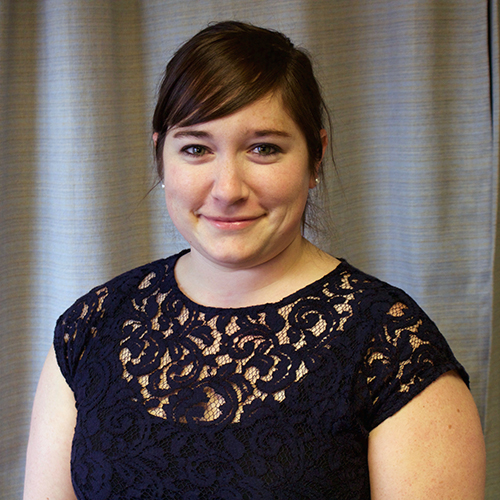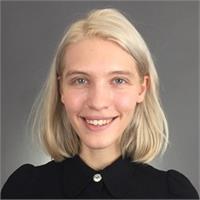Collaboration Diversion Policing November 23, 2020
With the growing recognition of the need to create alternatives to arrest and prosecution for low-level offenses, many innovative diversion alternatives are emerging. While there are effective post-arrest (or post-booking) diversion programs, changing the traditional criminal justice system in meaningful ways takes bold leadership and vision.
Tallahassee and Leon County, Florida, leaders have taken the bold step to create a community partnership that diverts first-time misdemeanor offenders to a pre-arrest behavioral health intervention program. The Pre-arrest Diversion Program (PAD) is now seen as a successful alternative to arrest and a law enforcement tool for improving public safety and community-police relations.
One of the factors that makes PAD unique is that it’s pre-arrest. The PAD program started in 2013 as the first program in Florida — and based on extensive research, possibly the first in the nation — to give law enforcement officers the formal discretion to divert a misdemeanor offender away from the traditional criminal justice system without first making an arrest, either a physical arrest or issuing a citation-in-lieu of physical arrest. Even though incarceration and prosecution may be avoided by post-arrest diversion, in most states the offender still has an arrest record with the arresting agency. It is well documented that having an arrest record jeopardizes current and future employment, compromises student loans, and blocks access to certain housing opportunities. Because the PAD program is pre-arrest, successful diversion and program completion means the offender does not have an arrest record. Program participation is tracked through an online application available to all law enforcement agencies.
The PAD program expands the concept of Florida’s successful Juvenile Civil Citation program to adults. Also known as an adult civil citation program, the PAD model provides an alternative to arrest for many low-level misdemeanor offenses that result from an error in judgment, out of control emotions, or someone simply making a mistake. Eligible offenses approved for diversion by Tallahassee and Leon County law enforcement officers include disorderly conduct, trespass, criminal mischief, petit theft, underage possession of alcohol, possession of marijuana under 20 grams, possession of drug paraphernalia, non-domestic simple battery, and non-domestic simple assault.
Based on the offender not having an arrest record and cooperating fully with the law enforcement officer, as well as consideration of the victim’s input, the officer has the discretion to offer diversion into the PAD program. An offender can voluntarily choose not to participate in the PAD program and instead opt for their day in court. If diversion is accepted, the offender enters an intervention program operated by DISC Village – a non-profit behavioral health agency in Tallahassee. During program intake at DISC Village each person receives a behavioral health assessment and is screened for drug use. Based on the results, an individualized intervention plan is developed. The participant then has 90 days to complete the intervention plan, as well as a mandatory 25 hours of community service. Participants pay the behavioral health company $350 for the intervention services. This is approximately the same cost as court fines and fees if they were to be criminally prosecuted. Payment plans and waivers are available for those who cannot afford the PAD fee. No one is denied participation for the inability to pay. Failure in the program results in the participant being arrested and prosecuted for the original offense.
Avoiding a criminal arrest record has proven to be a great incentive, and the evidence-based intervention services provided by DISC Village have significantly impacted recidivism for participants. Since the PAD program started in March of 2013, law enforcement officers with the Tallahassee Police Department and the Leon County Sheriff’s Office have diverted over 1,000 offenders. Of the nearly 80% of diverted offenders who successfully complete the program, only 6% were subsequently rearrested. Data used to determine the rearrest rate was provided by the Florida Department of Law Enforcement to the program’s evaluator at Western Carolina University. The statewide data reflected arrests for PAD participants in any Florida jurisdiction following participation in the program.
Improving public safety by reducing recidivism is a primary goal of the PAD program. A 6% rearrest rate is a significant reduction when compared to offenders prosecuted through the criminal justice system. While there is little formal research related to recidivism for first-time misdemeanants, in Leon County prior to the PAD program the estimated recidivism rate for this category of offenders was 40%. A long-term study conducted by the Oregon Criminal Justice Commission found the average rearrest rate was approximately 45% for first-time misdemeanor offenders processed through Oregon misdemeanor courts.
There are many benefits for using pre-arrest diversion. The offender and law enforcement receive the most obvious – improved efficiency for the officer and the offender has an opportunity to avoid an arrest record and receive intervention services. The program also reduces the workload for the already overloaded misdemeanor court system. During FY15, over 65,000 adults with no prior record were arrested in Florida and charged with a misdemeanor offense. If PAD programs were adopted throughout the state a significant portion of these individuals could have been directly diverted by law enforcement. The unnecessary and long-lasting harm that arrest records cause people who are not a true threat to public safety, could have been avoided and scarce criminal justice resources used for more important cases.
Long-term reform is only possible when community leaders decide to break away from the cycle of arrest and rearrest that results from the current revolving-door approach of the criminal justice system. There are many people for whom incarceration is necessary because they are a true threat to public safety. However, as most law enforcement officers will confirm, there are many times when a crime is committed as a result of heated emotions or poor judgment… we all make mistakes. Under these circumstances, a community is better served if officers are given the discretion to divert away from the criminal justice system, and instead of making an arrest the offender receives intervention services that improve public safety.
There is no doubt that in Tallahassee and Leon County, due to bold community leadership, law enforcement officers have an effective tool for handling first-time misdemeanor offenders. Lives of hundreds of people have remained intact because they avoided an arrest record, public safety has improved through reduced recidivism, law enforcement relations with the community improved because officers have an alternative to arrest, and the community partnership has no cost for the local government. With these types of outcomes, the PAD program is a model ready for widespread adoption.
This post originally appeared on the blog of the International Association of Chiefs of Police.











